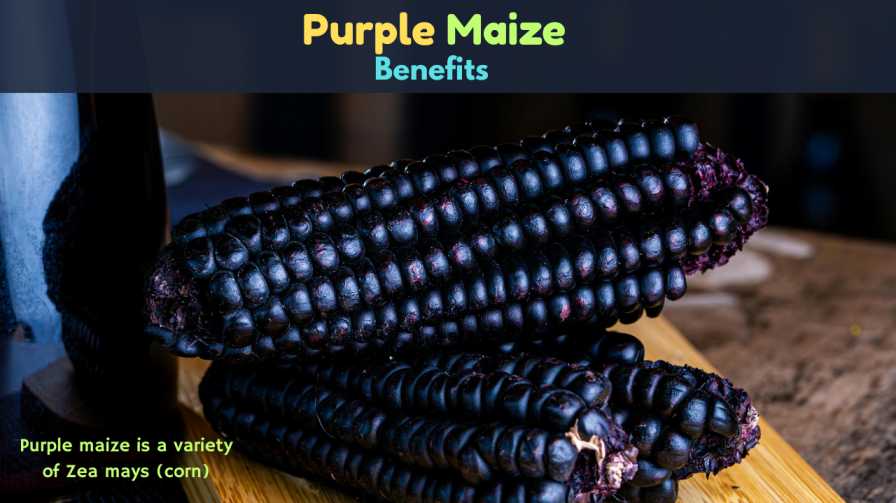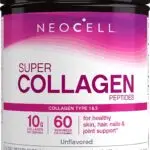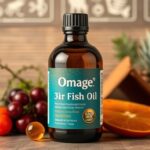
Traditional foods are gaining new recognition for their powerful health benefits in the evolving world of nutrition and wellness. One such ancient crop making headlines is purple maize benefits, also known as purple corn or maíz morado. Indigenous to the Andes of South America, purple maize has long been a staple in Peruvian diets and herbal medicine.
Today, it’s gaining global attention as a superfood packed with antioxidants, anti-inflammatory compounds, and potential disease-fighting properties.
But what exactly makes purple maize so special? This article takes a deep dive into purple maize’s benefits, historical roots, nutritional profile, and scientifically supported health effects, along with how to incorporate it into modern diets.
🌾 What Is Purple Maize?
Purple maize is a variety of Zea mays (corn) distinguished by its deep violet or bluish-black kernels. Its rich color comes from a class of plant pigments called anthocyanins, which are natural antioxidants. Unlike genetically modified crops, purple corn is a naturally occurring variety, cultivated for centuries in regions like Peru, Bolivia, and Ecuador.
While yellow corn is the most widely consumed type globally, purple maize is prized not only for its beauty but for its superior nutritional value. Traditionally, it’s used to make beverages like chicha morada, porridges, flour, and fermented foods.
🧬 Nutritional Composition of Purple Maize
Purple maize stands out nutritionally due to its high concentration of anthocyanins, particularly cyanidin-3-glucoside, which gives it powerful antioxidant and anti-inflammatory properties. In addition, it contains:
- Phenolic compounds
- Dietary fiber
- Vitamin C
- Iron and magnesium
- Lutein and zeaxanthin (important for eye health)
- Natural starches and complex carbohydrates
According to a 2020 study published in the Comprehensive Reviews in Food Science and Food Safety, purple corn contains up to 16.4 mg of anthocyanins per gram, significantly more than blueberries and other antioxidant-rich fruits.
🧪 Scientific Research on Purple Maize Benefits
Modern research is now verifying the medicinal claims long held by traditional cultures. Studies have linked purple corn’s bioactive compounds to multiple health benefits, including cardiovascular protection, blood sugar regulation, and anti-cancer activity.
1. Antioxidant Protection
Anthocyanins neutralize free radicals that cause oxidative stress, which contributes to aging, DNA damage, and diseases like cancer and Alzheimer’s. Purple corn’s anthocyanins have been shown to be more stable and potent than those in other fruits and vegetables (PubMed).
2. Anti-Inflammatory Activity
Inflammation is the root of many chronic illnesses. Purple maize extract can downregulate inflammatory pathways like NF-κB, reducing markers such as CRP and TNF-alpha, according to studies published in the International Journal of Molecular Sciences.
3. Blood Sugar Regulation
One of the most exciting findings is purple maize’s ability to improve insulin sensitivity and reduce blood glucose spikes. Its anthocyanins may inhibit digestive enzymes like alpha-glucosidase, slowing the breakdown of carbohydrates (Wiley Journal).
4. Cardiovascular Health
Purple maize supports heart health by improving endothelial function, lowering LDL cholesterol, and enhancing vascular flexibility. This is due to its nitric oxide-boosting properties, which improve circulation and lower blood pressure.
5. Cancer Prevention Potential
Emerging research suggests that anthocyanin-rich extracts from purple maize can inhibit tumor cell proliferation, induce apoptosis, and block angiogenesis (tumor blood vessel formation) in breast and colon cancer models.
🩺 Purple Maize Benefits at a Glance
| Benefit | Backed By | Mechanism |
|---|---|---|
| Antioxidant protection | USDA, PubMed | Neutralizes oxidative stress and cellular damage |
| Anti-inflammatory | Molecular Sciences Journal | Downregulates pro-inflammatory pathways |
| Supports healthy blood sugar | IFT, Clinical trials | Inhibits glucose absorption enzymes |
| Cardiovascular support | USDA, Nutrition journals | Lowers LDL, boosts nitric oxide, regulates BP |
| Cancer prevention (preliminary) | Animal/cell-based research | Reduces tumor cell growth and DNA mutation |
| Eye health | BrasaPeruvian.com | Rich in lutein and zeaxanthin |
| Weight control | AJAR, Phenolic compound studies | Modulates fat metabolism, limits fat cell formation |
🔬 Purple Maize vs Yellow Maize: Nutritional Comparison
| Nutrient/Benefit | Purple Maize | Yellow Maize |
| Color Compound | Rich in anthocyanins | Contains carotenoids (like beta-carotene) |
| Primary Antioxidants | Anthocyanins (cyanidin-3-glucoside) | Lutein, zeaxanthin, and beta-carotene |
| Anti-inflammatory | Strong due to phenolic compounds | Moderate |
| Eye Health | Lutein + Anthocyanins | Higher lutein/zeaxanthin |
| Glycemic Impact | Lower (better for blood sugar) | Medium to high |
| Cancer-Fighting Potential | High (per anthocyanin studies) | Limited evidence |
| Taste | Earthy, slightly sweet | Mild and sweet |
| Culinary Uses | Traditional drinks, flour, teas | Universal—cornmeal, snacks, popcorn |
| Availability | Limited, specialty markets | Widely available |
Conclusion: Purple maize offers superior antioxidant and anti-inflammatory benefits compared to yellow maize. While yellow corn remains a global staple, purple corn stands out for those seeking therapeutic and functional nutrition.
🥦 How Does It Compare to Other Superfoods?
Compared to other antioxidant-rich foods like blueberries, acai, or black rice, purple maize has one of the highest anthocyanin densities. Moreover, it provides a stable form of anthocyanin that doesn’t degrade easily during cooking.
| Superfood | Anthocyanin Content (mg/g) | Stability After Cooking |
| Purple Maize | 16.4 | High |
| Blueberries | 8.5 | Medium |
| Acai Berries | 9.7 | Low |
| Black Rice | 5.4 | Medium |
This makes purple maize an ideal superfood for recipes, drinks, and health-conscious snacks.
🍴 Culinary Uses of Purple Maize
1. Chicha Morada (Purple Corn Drink)
A traditional Peruvian drink made by boiling purple corn with pineapple, apple, cinnamon, and cloves.
Ingredients:
- 1 cup dried purple corn
- 8 cups water
- Pineapple peel
- 1 chopped apple
- 1 cinnamon stick
- 3 cloves
- Juice of 1–2 lemons
- Sweetener to taste
Instructions:
- Combine all ingredients (except lemon juice and sweetener) in a pot.
- Simmer for 45–60 minutes.
- Strain and cool.
- Add lemon juice and sweetener.
- Serve chilled.
2. Purple Corn Pancakes
Use purple maize flour as a colorful and nutritious alternative to white flour in pancakes or muffins.
3. Smoothie Additive
Add purple corn powder to smoothies for a color boost and antioxidant punch.
🌍 Purple Maize in Functional Foods & Industry
Due to its deep color and high anthocyanin content, purple maize is being explored as:
- A natural food dye
- An ingredient in health supplements
- A base for gluten-free baked goods
- A component in antioxidant teas and powders
Its commercial potential is enormous in the clean-label food movement, particularly as synthetic dyes lose consumer favor.
🛒 Where to Buy Purple Maize
Purple maize is available in:
- Organic stores
- Latin grocery stores
- Online health retailers (e.g., Amazon, BowtieDuck, BrasaPeruvian)
Forms include:
- Dried kernels
- Powder/flour
- Extract capsules
- Beverage concentrates
⚠️ Are There Any Side Effects?
Purple maize is generally safe and well-tolerated when consumed in food amounts. However:
- Overuse of extracts or supplements may cause gastrointestinal upset
- People on blood sugar medication should monitor levels closely
- Always source from trusted, non-GMO, organic providers to avoid contamination
🧠 Final Thoughts
Purple maize is a nutritional treasure, combining the ancient wisdom of Andean agriculture with modern scientific validation. With potent antioxidants, anti-inflammatory agents, and blood sugar-regulating properties, it has earned its place in the global list of superfoods.
Whether you enjoy it as a traditional drink, a smoothie powder, or a gluten-free flour alternative, incorporating purple maize into your diet may help support better heart health, stronger immunity, and even longevity.
So the next time you’re exploring healthy food options, consider adding a splash of deep violet to your plate. Purple maize isn’t just a colorful grain — it’s a scientifically backed powerhouse for your well-being.







